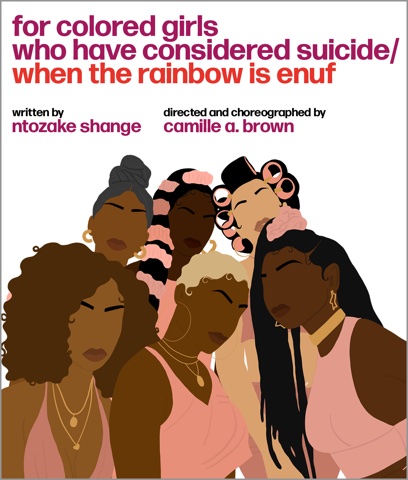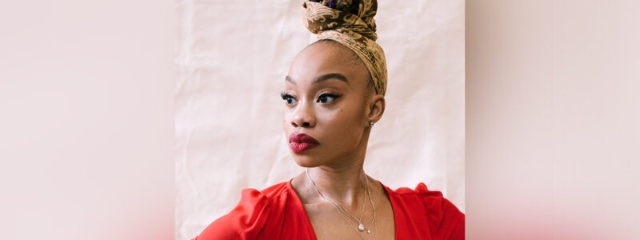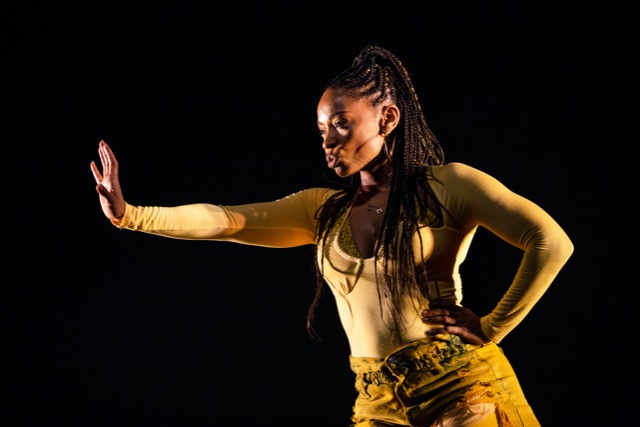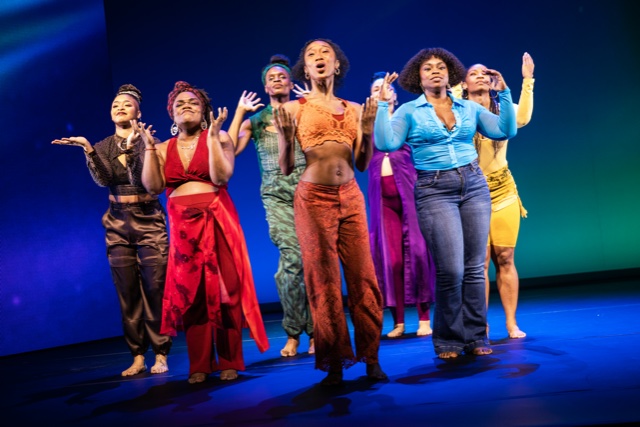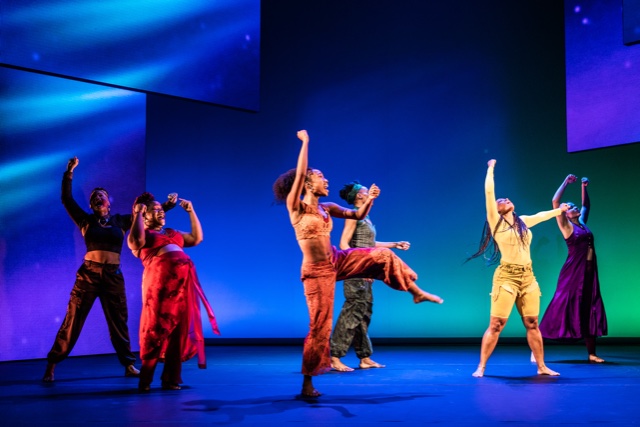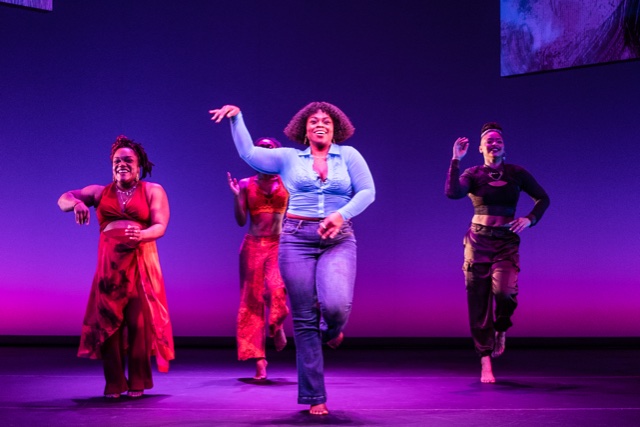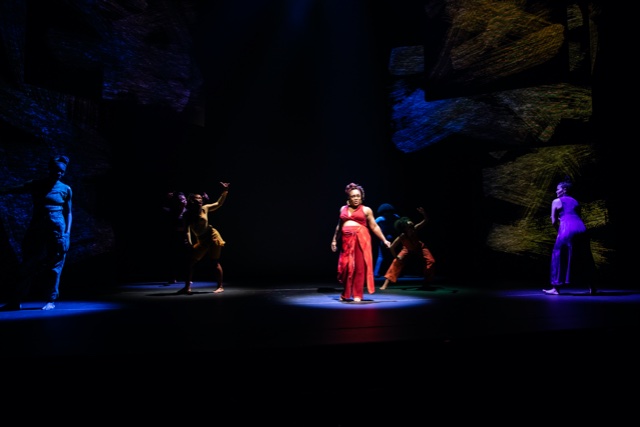for colored girls who have considered suicide
Ntozake's Classic Lives at the Booth Theater
By: Rachel de Aragon - May 19, 2022
for colored girls who have considered suicide/when the rainbow is enuf
By Ntozake Shange
Directed by Camille A. Brown
The stage is lit only by the abstract chiaroscuro photos projected on soft screen, like the hazy landscape. A quiet light reveals Lady In Brown (Tendayi Kuumba) as this rhythmic dance poem begins. “Dark phases of womanhood , of never having been a girl..” Her movements are as powerful and sensuous as the words, with a spiritual nod to African roots.
We are confronted by the question of womanhood. The demands of the coming of age in America as seen in the lives of its “colored girls” is the substance of this outspoken feminist work. Seven women tell their stories and give voice to their aspirations and despair.
Jiyoun Chang's lighting design is subtle, and joins and the Projection design ( Aaron Rhyne) and the concepts of Myung Hee Cho (scenic designer) to sustain an interesting and harmonious space for the dancers Martha Redbone and Aaron Whitby have created a multi-layered original musical score which gives us hints of popular rhythms and yet fully supports the emotional textures that unfold before us.
Our Colored Girls announce their home towns, the cities of America, and dissolve into the playful street-rhymes games of childhood. The Lady in Yellow (D.Woods ) brings us to the eventuality of the American right of passage. “It was graduation night and I was the only virgin in the crowd.” We are left to wonder, what is out there after that “back seat of the ol' Buick.” Innocence has been broken, and the dance becomes fevered and the language becomes sharp. Girlhood becomes womanhood and she is hopeful and disappointed. The graceful interaction of these dancers reinforce the ability of Shange's words to call out the quest for love across the decades.
We are looking for love. Lady in Red (Kenita R. Miller) finds herself the expectant mother with a the child of a man who is slipping out of his commitment. Lady in Blue goes night-clubbing. All the dancers move in and speak to each other about the things that cannot be said: about date-rape and and abortion and the hopelessness of not being able to explain it. Are women trapped in the frightening assaults on their desire to find love.
We glimpse at another role for colored girls as Lady in Purple (Alexandria Wailes) reveals.. “there were once quadroon balls and elegance in St. Louis”. Wailes is a an American Sign Language actor and her lines are creatively signed, as the other dancers support her words with theirs, also spoken and signed.
This was an extremely effective casting served to highlight the universality of the female search for self identity. Kuummba returns; young girl reading about Toussaint L'Ouverture. Is he the same as Toussaint Jones? Lady in Orange (Amara Ganderson) gives us a beautiful sensuous dance and affirmation that she will find love without bitterness. With the strong Latin influenced dance movements of New York Lady in Blue bemoans her ghettoization. “ I used to live in the world and then I moved to Harlem.” The stories that they tell in verse and dance intertwine. And Lady in Green( Okwui Okpokwasli) declares that “somebody nearly walked off with all of my stuff”
With Tony nominee Camille A. Brown's direction and choreography, Shange's creation moved gracefully into our current era. We are left in the space in which feminist militancy faces the contradiction of defining women in terms of men's perceptions and desires. If women's sense of self is so deeply tied to the failures of men to provide the love, how indeed can the female persona step beyond that?
Shange wrote this piece when these questions were beginning to be explored out loud among both black and white women. Opportunity has certainly grown, and the view of women as only being reflections of the men in their lives has certainly begun to crumble.
The conversation has grown much bigger and the space in which colored girls can be seen is far broader. But there is nothing dated about the questions. The issue of internalizing the narrow and negative expectations of the society still is real for black women and for women in general.
We live at a time when the suicide rate for girls is rising at 6.6% a year, and the statistics for black women and native women is far higher. Is there a way out? Shange definitely believes there is a way out . . “ I found god in myself and I loved her,” is her message.
At the Booth Theater in New York. Tickets here.

